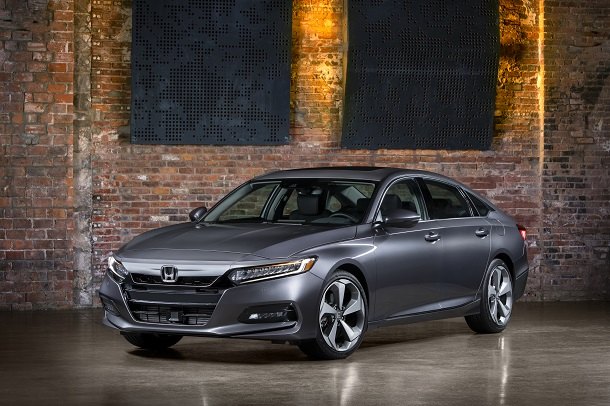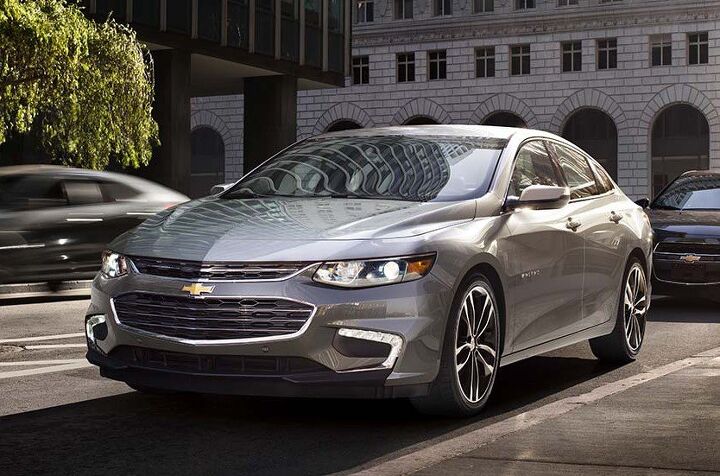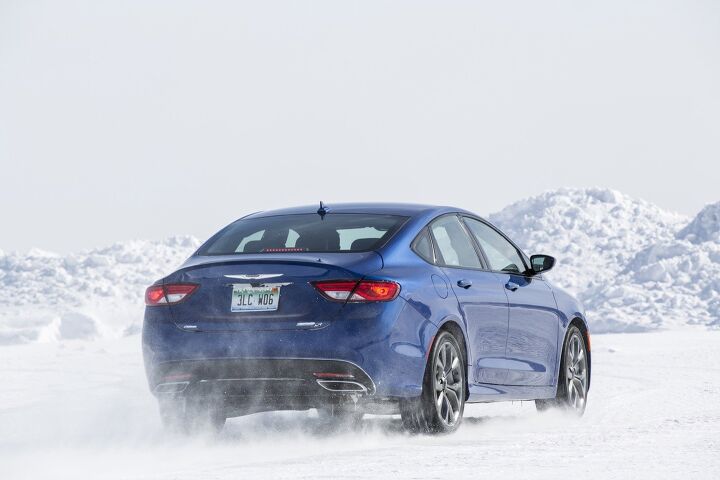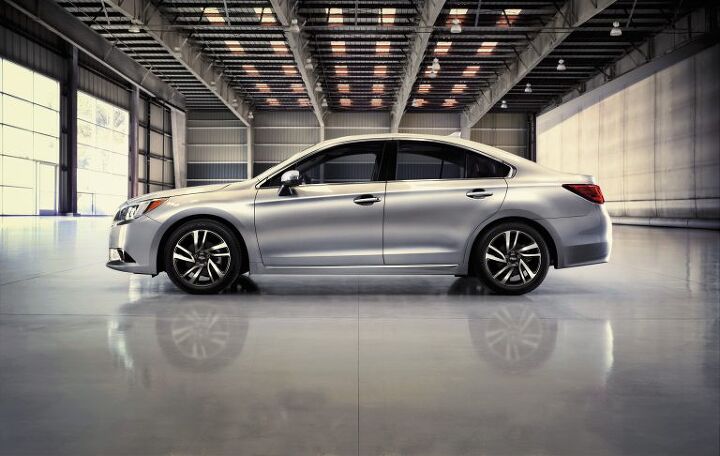#MidsizeSedanDeathwatch
Midsize Sedan Deathwatch #17: Trouble In October 2017, Unless Your Name's Honda Accord
U.S. sales of midsize cars plunged 16 percent to fewer than 130,000 units in October 2017, the lowest-volume month for the midsize sedan category since the winter doldrums of January.
For almost every player, from the forgotten Mazda 6 to the recently revamped Hyundai Sonata to the all-new Toyota Camry, there were fewer U.S. buyers in October 2017 than in October 2016. In most cases, far fewer. Hyundai Sonata volume plunged 49 percent, year-over-year, as Hyundai pulls away from daily rentals, clarifying just how little retail demand the Sonata truly musters. Double-digit percentage drops were also reported by the Kia Optima, Subaru Legacy, Volkswagen Passat, and Mazda 6.
But the sharp October tumble wasn’t reserved for each member of the midsize category. Newly launched this fall, U.S. sales of the 10th-generation 2018 Honda Accord predictably improved in October, driving Honda’s share of the segment up four points to 21 percent.
It’s a familiar story.
Midsize Sedan Deathwatch #16: The Decline of the Midsize Class's Middle Class
Ever more minor midsize players continued to see their share of America’s midsize sedan segment dwindle in September 2017. The cause: domination on the part of America’s two major midsize cars.
The all-new 2018 Toyota Camry enjoyed its first full month of meaningful availability in September and produced a 13-percent year-over-year U.S. sales improvement as a result. Meanwhile, Honda is clearing out remaining 2017 Accords in advance of the all-new 2018 Accord’s arrival this fall. Honda’s efforts produced a 10-percent uptick compared with September 2016.
Yet despite the big gains from the two major players, the upper class, the midsize segment still declined 7 percent in September because of sharp declines by many members of the middle class.
That means Camry and Accord market share continues to rise. That means the slice of the market earned by the middle class continues to shrink.
Midsize Sedan Deathwatch #15: Toyota Camry Proves to Be a Killer In August 2017
The launch of the all-new 2018 Toyota Camry began in July 2017 and delivered a big boost to America’s best-selling midsize car in August 2017.
As its competitors combined for a 12-percent loss valued at nearly 16,000 fewer sales than in August 2016, Toyota Camry sales jumped 13 percent, a gain of 4,187 sales. That figure includes 6,805 new-gen Camrys imported from Japan, where the Camry’s home market factory is being relied upon while Toyota’s Georgetown, Kentucky, assembly plant gathers steam for the entirely different Toyota New Global Architecture.
With falling sales across much of the category and rising volume at the top seller, Toyota got exactly what it called for in August 2017: a huge market share increase. But did the Camry provide the rumored boost to the segment overall? Quite clearly no, not yet.
Honda Declares the Midsize Car Alive As It Prepares to Launch Next Accord
One reason why this post was published Wednesday instead of earlier in the week is that I was at a Chicago-area event where Honda PR was presenting the all-new Accord to local media.
This particular presentation was unusual in that Honda focused less on the new car’s specs and features and more on a major question that’s hovering over the midsize-sedan class – namely, will the segment even exist in a few years? Or will crossovers (CUVs) have fully taken over by then?
Midsize Sedan Deathwatch #14: July 2017 Sales Plunge by a Fifth, Everybody Falls Except the Dodge Avenger
Every midsize car on sale in the United States reported declining year-over-year volume in July 2017. Every car except the Dodge Avenger, which came back from the dead with 10 reported sales after a nine-month hiatus. 2014 was the Avenger’s last model year.
But forget that sales stat quirk — Pentastar Avenger Blacktop Edition, be still my soul. Every other midsize nameplate generated fewer sales in July 2017 than July 2016, with losses piling up fastest at Ford and Hyundai, with the Fusion and Sonata, respectively.
Between major Fusion and Sonata losses and decreased volume everywhere else, U.S. midsize car volume fell by a fifth in July 2017 — a 36,000-unit decline.
Midsize Sedan Deathwatch #11: Blame Midsize Cars For America's Passenger Car Decline
Why did America’s passenger car market tumble 11 percent in April 2017?
Midsize cars deserve much of the blame.
Why is America’s passenger car market down 12 percent through the first four months of 2017?
Midsize cars deserve most of the blame.
Midsize Sedan Deathwatch #10: In April 2017, Cannibal Camry Feeds as Others Cede
Reaching the end of the line before an all-new 2018 model launches, the outgoing Toyota Camry is — quite predictably — losing sales. After all, the auto industry’s total sales volume is shrinking. Passenger cars, in particular, are paying a price. And the midsize segment is stumbling all the more so. With all these factors contributing, of course the Camry is shedding volume.
Aged, outdated, and antiquated, the Toyota Camry seemingly has the most to lose. Yet despite a 4-percent year-over-year U.S. sales loss in March 2017 and a 13-percent decline through the first-quarter of 2017, the Toyota Camry is gaining heaps of market share in America’s midsize sedan segment, not losing it.
That’s because the cars that are most to blame for the midsize sedan segment’s rapid decline don’t sit at the top of the leaderboard, but rather hail from the JV squad.
Midsize Sedan Deathwatch #9: Detroit's Participants Tumble At Double Speed In February 2017
Aside from the Volkswagen Passat’s 40-percent year-over-year uptick, every automaker competing in America’s midsize sedan segment suffered from declining volume in February 2017.
The midsize car category tumbled 19 percent, a loss of more than 34,000 sales.
February 2017 marked the twelfth consecutive month of year-over-year declines for midsize car sales in America.
This is the ninth edition of TTAC’s Midsize Sedan Deathwatch. The midsize sedan as we know it — “midsizedus sedanicus” in the original latin — isn’t going anywhere any time soon, but the ongoing sales contraction will result in a reduction of mainstream intermediate sedans in the U.S. market.
How do we know? It already has.
The Passat’s exceptional year-over-year uptick by no means represents healthy volume for the big Volkswagen. But the bigger story from February’s results was the horrific nosedive performed by Detroit nameplates: one discontinued nameplate, one of the older members of the midsize fleet, the newest member of the midsize fleet, and one semi-premium niche player.
Midsize Sedan Deathwatch #8: It Got Downright Ugly In January 2017
The Suzuki Kizashi‘s brief tenure came to an end in 2013. 2014 was the last year Mitsubishi produced Galant sales in the United States. 2015 marked the Dodge Avenger’s terminus. The Chrysler 200’s death was announced in 2016.
Will 2017 be a period of further contraction in America’s midsize sedan market?
This is the eighth edition of TTAC’s Midsize Sedan Deathwatch. The midsize sedan as we know it — “midsizedus sedanicus” in the original latin — isn’t going anywhere any time soon, but the ongoing sales contraction will result in a reduction of mainstream intermediate sedans in the U.S. market.
How do we know? It already has.
If January 2017’s results are anything to go by, it’s going to be a very ugly year for midsize cars in the United States; sales tumbled by more than a fifth in January 2017, a year-over-year decline worth 30,000 lost sales.
Midsize Sedan Deathwatch #6: November 2016 Sales Flat, Market Share Keeps Falling
U.S. sales of midsize cars remained on an even keel in November 2016, decreasing by only one-tenth of one percent compared with November 2015.
But make no mistake: the midsize car category still took a hit in November. While volume remained level, the segment’s share of the overall U.S. new vehicle market fell below 12 percent last month, the fifth consecutive November in which midsize market share has declined.
Midsize Sedan Deathwatch #5: October 2016 Sales Plunge 20 Percent, Most Cars Down By Double Digits
This is the fifth overall edition of TTAC’s Midsize Sedan Deathwatch. The midsize sedan as we know it — “midsizedus sedanicus” in the original latin — isn’t going anywhere any time soon, but the ongoing sales contraction will result in a reduction of mainstream intermediate sedans in the U.S. market.
How do we know? It already has.
U.S. sales of midsize cars plunged by 20 percent in October 2016, a year-over-year loss of nearly 39,000 sales for a segment that was already down by nearly 195,000 through the first three-quarters of 2016.
American consumers, businesses, government agencies, and daily rental fleets are still on pace to purchase and lease more than two million midsize cars in calendar year 2016. Of course, Americans had already purchased and leased more than two million midsize cars at this point in 2015, when the midsize sedan decline was already underway.
Regardless of what came before, October’s results were a punch in the midsize sector’s gut, as total sales fell by a fifth because of declines reported by every player in the category.
Save for the Subaru Legacy.
Midsize Sedan Deathwatch #4: September Sales Plummet 11%, a 21,000-Unit Drop
This is the fourth overall edition of TTAC’s Midsize Sedan Deathwatch. The midsize sedan as we know it — “midsizedus sedanicus” in the original latin — isn’t going anywhere any time soon, but the ongoing sales contraction will result in a reduction of mainstream intermediate sedans in the U.S. market. How do we know? It already has.
As more proof of a struggling midsize sedan sector, September 2016 sales tumbled 11 percent year-over-year, a loss of more than 21,400 U.S. sales for a segment that was already losing an average of 21,600 sales per month during the first two-thirds of 2016.
The Toyota Camry, America’s top-selling midsize car and the most popular car in America over the last 14 consecutive years, was outsold by its own compact sibling in September. Yet the Camry’s sales decline, in line with the segment average, was by no means unusual in September. Aside from a modest Nissan Altima increase and a jump in sales of the new Chevrolet Malibu, every midsize nameplate generated fewer sales this September than last.
Midsize Sedan Death Watch #3: August 2016 Midsize Sales Plunge 26%
There will always be a place in the American market for the conventional midsize sedan.
Despite harsh declines in recent months, consumers are still on track to register more than 2 million midsize cars in calendar year 2016. In fact, a handful of nameplates — Accord, Legacy, Malibu — are attracting more buyers this year than they did in the first two-thirds of 2015.
But U.S. sales of midsize cars are now falling with a special kind of speed, plunging 26 percent in August, a loss of nearly 58,000 sales over the span of just one month.




























Recent Comments